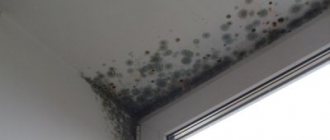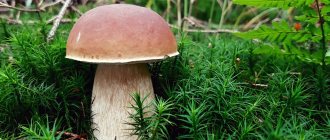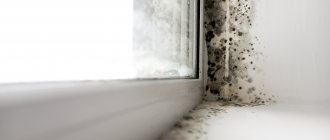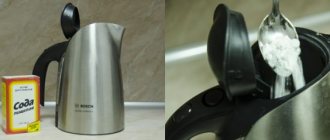Kombucha has a fairly powerful system of self-defense, self-regulation and regeneration. During its life, the fungus produces special substances (antibiotic substances or secondary metabolites) that suppress the activity of third-party (including pathogenic) organisms.
An important role in the protective functions of the fungus is played by the pH (acidity level) of the infusion, which changes throughout the maturation of the drink.
At the same time, kombucha, like any other living organism (and in this case a symbiotic colony of living organisms), is susceptible to various diseases. And in most cases, the cause of mushroom diseases is its owners, or rather mistakes or inattention to the mushroom during preparation and storage.
The main diseases of kombucha:
Why does mold appear on kombucha?
In different cases, green or black mold appears on the surface of the tea jellyfish. Let's figure out why a recently healthy mushroom becomes moldy. There may be several reasons for this:
- Dirty container. This is the most common reason why mold appears on the surface of a mushroom. The jar that is used to propagate medusomycetes (this is the scientific name) must be thoroughly washed and, ideally, sterilized. Also pay attention to the cleanliness of the utensils used when brewing tea. All spoons, jars and other containers must be perfectly clean.
- Unwanted “neighbors”. There should be no plant pots, bird cages or animal bowls near the jar where the mushroom is floating.
- Non-sterile protection. During storage, the jar with the product should be covered with a thin cloth or gauze - they must be clean. Ideally, take sterile medical gauze and roll it into 3-4 layers.
- Tea with flavors. If all cleanliness conditions have been met, but the kombucha is still moldy, pay attention to what kind of tea was used to prepare the infusion. Flavored tea should not be brewed. It contains essential oils that can cause mold.
Important! Mold from the tea jellyfish cannot move onto walls or furniture.
The process of separating the top of the kombucha.
For cutting, a mushroom with a thickness of at least 9 cm is suitable, then its separation will take place without consequences. So the top part will be 4 cm thick. We take the outermost part of the top and carefully begin to separate the layers from each other with our fingers.
For now, put the separated part on a plate, and leave the base in the jar. I try not to cause any further inconvenience to the kombucha, so I don’t take it out, but leave it at the bottom of the jar.
The first jar contains the base, the second photo shows the separated top of the mushroom. In this case, I do not rinse the kombucha halves, because... There was no mucus on the sides and bottom, so in this case it does not need treatment.
It's time to separate the top into a separate jar.
We make a tea-sugar solution, let it cool for 4 hours at room temperature, and pour in the cut parts of the kombucha.
Finally, the two halves are placed in jars, filled with chilled tea and sugar solution, and we begin to wait for the drink to be prepared. The lower part floated up on its own after 1 minute. Note that the separated top floated halfway, so I had to pour the tea solution a little so that the top could touch the bottom of the jar. In total, the jar contains 1 liter of solution - let the mushroom part grow stronger and become accustomed.
The upper part finally surfaced only after 2 days.
Mechanical damage to kombucha
| The structure of the formed kombucha is quite strong and elastic, thanks to the thin cellulose fibrils that hold the entire association of bacteria and yeast together. At the same time, during the care process, the mushroom may be subject to various types of mechanical damage (cuts, tears, punctures, through holes, etc.). Most often this happens if the container containing the mushroom breaks, or, for example, the mushroom has become too thick and it is almost impossible to remove it without injury (if the container has a narrow neck), etc. Mechanical damage to kombucha in most cases does not have critical consequences for the fungus (regeneration function) and is only conditionally classified as a disease. However, if the area of damage is significant, then it is recommended to place the damaged mushroom in a small amount of nutrient solution (so that it only slightly covers the mushroom) until the kombucha restores the damaged or lost area, or is formed on the surface of the solution. button. |
Which side should you put the mushroom in the jar?
The medusomycete has a homogeneous structure consisting of several elastic layers. The upper part of its body is denser and smoother, while the lower part is loose and fibrous due to the accumulation of a colony of acetic acid bacteria and beneficial microorganisms. It is here that the synthesis of organic acids occurs and the transformation of sweet tea leaves into a healthy infusion. It is prohibited to touch the growth zone so as not to disrupt its normal functioning.
Thus, it is necessary to lower the medusomycete into the container with the lower fibrous side to ensure its full interaction with the nutrient solution.
Kombucha becomes moldy: what to do
Kombucha lovers have come up with and tested several ways to combat mold:
- Drain all the liquid from the jar and rinse the jellyfish thoroughly with clean water. Then treat it with lemon juice or 10% wine vinegar. Place the mushroom in the prepared tea with the required amount of sugar and pour in 2 tbsp. l. vinegar.
- If blue, green, red or black spots have formed on your kombucha, you need to drain the tea and tear off the affected layers of fungus. Place it under a cold water tap. Any layers that tear easily should be discarded. Healthy layers are thoroughly washed and brewing begins from scratch.
- Remove and discard moldy layers, wash the mushroom gently, rubbing water in with your fingers, then rinse in pure apple cider vinegar.
With any method, the jar is sterilized with boiling water and covered with sterile gauze before filling.
A mushroom that is severely affected by mold should not be preserved. You should also not drink a drink made from diseased kombucha. This may cause gastrointestinal disorders and allergic reactions.
Hello, dear friends. Today I will talk about the most unexpected plant in our entire acquaintance - kombucha. It’s been at hand for so many years, and it only just occurred to me that I’ve never touched on this topic. And what prompted me to think about an article about kombucha was one unpleasant circumstance - he got sick. But let's talk about everything in order.
Why does kombucha foam: diseases and their treatment with photos, what to do and how to revive
It’s easy to tell that kombucha has gone bad by looking at it. However, in order to prevent it from reaching such a state, you need to know the first signs. If they occur, timely measures taken will help cure kombucha.
Is it possible to drink a drink if there is mold on the surface of the kombucha?
Mold fungi are insidious and dangerous. It is strictly forbidden to drink a moldy drink. At best, you can get away with gastrointestinal upset. In the worst case, allergic reactions and complex forms of digestive system disease will appear. At the first signs of mold, the entire drink should be poured down the drain.
The appearance of a moldy film indicates the unsuitability of the drink
Sometimes the surface of the mushroom is covered with a faint white coating. It is often confused with mold. In fact, the problem occurs when the jellyfish is washed frequently. In summer, the procedure should be carried out once a week, and in winter – once every two weeks.
Why doesn't kombucha float after splitting?
How long it takes for kombucha to rise to the top depends on several factors. The main body of the medusomycete, after successful division, when placed in the usual nutrient medium of water, tea leaves and sugar, may not drown at all. It is considered normal if it lies at the bottom of the jar for up to three hours.
After separation, kombucha does not float for a long time if two or more plates were taken, or the operation was carried out carelessly. This is a significant injury and can remain at the bottom for up to three days. The medusomycete is sick, there is nothing good about it, but it’s too early to sound the alarm.
The young thin plate should not float up immediately. It will begin to work when it gets stronger; shoots will appear in the lower part, processing the nutrient solution into kombucha. Before this, the kombucha lies at the bottom of the jar. For successful adaptation, the amount of liquid should be minimal.
The time when you should pay attention to the symbiont of yeast fungus and acetic acid bacterium that does not want to float up from the bottom of the jar directly depends on the method of division and the thickness of the body of the medusomycete:
- An old kombucha with 5-6 plates should rise immediately after a carefully performed operation. If it does not pop up, the alarm should be sounded after 2-3 hours.
- When the owners know that negligence was made when separating the records, for example, the hand trembled, the parts were forcibly torn, or a knife was used, it will take more time to adapt. You may have to wait 3 days.
- Young kombucha can lie at the bottom of the jar from 3 days to 2 weeks. The nutrient solution should barely cover the body of the medusomycete.
Teas for infusions
Black tea solution
If you prepare a solution with black tea, you can get a very high percentage of glucuronic and lactic acids, and purines, which can normalize metabolism in the body. A huge amount of phenol and essential oils have bactericidal effects. This infusion perfectly fights fat deposits and removes excess cholesterol.
Green tea solution
Can help fight stones in the kidneys, gall bladder and bladder. It will have a huge amount of vitamins P, K, B2, which are responsible for the freshness and elasticity of the skin, normalization of blood circulation, and strengthening of hair. Thanks to unfermented green tea and the tannins it contains, cancerous tumors do not develop.
In addition, this infusion is very effective for various vascular and intestinal diseases, and as an antibacterial agent.
Despite the fact that most people prefer black tea, the mushroom itself is very fond of green tea. In it he lives longer and grows much better.
Herbal teas
When preparing an infusion for kombucha, you can use both herbal infusions and mixtures. To do this, you need to take two liters of water and five tablespoons of herbal mixture. You can use two spoons of tea and the rest is grass. It is recommended to leave the herbs for about one hour before straining.
Use of various plants
- Blackberry leaves and nettles, coltsfoot, plantain, strawberry and birch leaves, white thorn, green tea, linden blossom.
- Nettle leaves, rose hips and green tea.
- Oregano, yarrow, chickweed, snapdragon leaves, any tea.
- Snapdragon, yarrow, bear's ear, nettle, any tea.
- Raspberry leaves and wild berry leaves, black currants and blackberries.
You cannot take plants that have a huge amount of essential oils, for example, sage, pepper, chamomile, wild currant, etc., as such an infusion will negatively affect your health.
Recipe – Making Kombucha
Required ingredients:
- Clean water two liters;
- Tea mushroom;
- Black tea four teaspoons, herbal or green tea the same amount;
- One hundred grams of sugar, or honey, but the use of artificial substitutes is strictly prohibited.
Kombucha from black tea - grown at home
In order for the mushroom to form correctly and quickly, you should choose large-leaf tea leaves without impurities or additives.
As practice shows, the cheaper the tea costs, the better the kombucha will turn out.
If dust is found in a pack of tea, it is better to give preference to another variety.
Instructions for making kombucha:
- Pre-clean the containers for growing mushrooms from dust and dirt. If the bottle is not clean, the kombucha will most likely die in the early stages of formation. You should not wash the bottle with dishwashing chemicals; it is better to use the old method - a sponge and baking soda.
- The next step is preparing the tea leaves. For such purposes, about 5 tablespoons of tea leaves are poured into the kettle, which are filled with half a liter of boiling water. In this state, the tea should be infused until it has completely cooled. There is no need to pour heaping spoons of tea, 50 grams will be enough.
- As soon as the brew has cooled, 70 grams of sugar are added to it, which must be thoroughly stirred until completely dissolved.
- The broth is filtered using gauze or a metal strainer. The tea drink is placed in a three-liter jar. After this, a thick layer (preferably several layers) of gauze is placed on top of the jar.
This tea drink is sent to a secluded place for 6-7 weeks. If after 1-2 weeks you notice an unpleasant vinegar smell, just don’t worry. This phenomenon only signals the beginning of fermentation, during which a mushroom is formed.
After a few days, this smell will gradually disappear, and a thin film will form on the surface of the drink. And each new day will thicken this layer until a good kombucha is formed.
Watch a video on how to grow kombucha at home from scratch from Ivanovich
List of reasons why kombucha becomes moldy
The main reason for the appearance of mold is non-compliance with the technology for growing tea medusomycetes. If we consider each nuance separately, there are quite a lot of them.
Mold first appears on the surface of the drink in small circles, and then grows throughout the liquid surface.
Violation of sanitary rules
Often the main reason why kombucha becomes moldy is unsanitary conditions. The drink should not be placed near dirty dishes, vegetables, fruits, open canned food, or in places of contact with pets. When pouring the drink or handling the tea jellyfish, your hands must be clean. The table, jar, and cutlery are washed with hot water.
Violation of the rules of care
It is optimal to care for medusomycetes while wearing medical rubber gloves. Only they can ensure sanitary cleanliness. This is especially true for women with long manicures. Many pathogenic bacteria collect under the nails, which lead to the appearance of mold. If you don't have a long manicure, you can do without gloves, but you should wash your hands with antibacterial soap. Even short-cut nails are cleaned with a brush.
Important! When servicing a mushroom without gloves, long nails can leave cuts on the body of the jellyfish, where spores of moldy fungi enter.
Violation of cooking rules
The kombucha drink is prepared according to a simple recipe. If you do not follow this rule, green or black mold will grow inside the jar instead of kombucha. When purchasing tea for refilling, you should not take old expired products or goods in damaged or dirty packaging. There will definitely be spores of moldy fungi inside. It is important to use clean cutlery when preparing a drink.
Contaminated air
Mold always multiplies in a favorable environment: humid and polluted air, temperature below + 18 ° C. If there is such an atmosphere in the room, the mushroom will definitely become moldy. You cannot smoke inside the room with the tea jellyfish. When the room is damp, there are spots of mold on the walls, the neck of the jar must be covered with a cloth, several layers of gauze or a napkin. It is important to wash the fabric cover more often, as mold spores accumulate on its surface.
Advice! The fabric lid will prevent insects from getting inside the mushroom jar.
Poor quality brewing
The tea jellyfish is sensitive to poor-quality tea leaves. You cannot use old teas, especially those flavored with different essences. Aroma oils contribute to the formation of mold, as they weaken the immune system of kombucha. In addition, such teas also contain a dye that has a negative effect on the fungus.
Important! You cannot use packaged products for refilling. Large-leaf tea without any aromatic additives is considered the best.
Unwanted "neighbors"
Kombucha does not like close proximity to animals, birds, aquariums, food and dishes of pets. You cannot place flowers near a jar with a tea jellyfish, either cut bouquets or crops growing in a flower pot.
Diseases and problems
Before drinking kvass, you need to make sure that the mushroom is healthy and floating on the surface. It should be smooth and translucent, without foreign inclusions.
Like any other living culture, medusomycetes can get sick
To easily cope with emerging pathologies, you need to regularly pay attention to the appearance of your kombucha. This will allow you to detect the problem in time
The culture has grown too big
An increase in kombucha volume indicates that the crop is doing well and is being properly cared for. But large kombucha takes up too much space, and it becomes difficult to catch and rinse. You can carefully remove the oldest layers, this will not kill the medusomycete.
The mushroom sinks to the bottom
A healthy culture floats on the surface of the liquid, but sometimes you can notice that it lies at the bottom and does not float up. This behavior is typical for aged mushrooms that have decided to raise a successor and retire. The film on the surface of the infusion is the young culture. It must be transferred to a clean jar of tea.
Old kombucha plants are not recommended for making drinks because they produce a lot of acid. Such mushrooms are only suitable for the production of vinegar.
The drink matures very slowly
If the medusomycete is cold, its development is inhibited. To reduce the preparation time for the drink, you need to move the culture to a warmer place.
A brown coating has appeared
A brown film indicates neglect of caring for the mushroom. The culture needs to be washed, the top layer removed from its surface and in the future try to pay more attention to kombucha.
The mushroom is covered with small spots
Stains on kombucha are damage caused by grains of sugar and particles of tea leaves. There is no need to treat the medusomycete, but in the future you should dissolve the granulated sugar more thoroughly and strain the tea leaves.
Mold has formed
If the kombucha becomes moldy, this is not a reason to throw it away. The culture is simply sick and proper care will help it recover. In its normal state, kombucha successfully fights against foreign organisms, but if it is kept in inappropriate conditions, the natural defense is weakened
Moldy crops should be washed thoroughly, paying attention to folds, treated with vinegar and rinsed with boiled water.
Sometimes white bubbles may appear on kombucha, which many people mistake for mold. It is actually carbon dioxide released during fermentation. Treatment in this case is not required.
Recipe: Sunshine Kombucha with Turmeric, Ginger and Honey
Who could use a little sun this time of year, am I right?! This sunny kombucha has become my new favorite. It's filled with turmeric, ginger, lemon, and honey—all solid ingredients for uplifting your mood and boosting your immune system. Plus, you know it, they are very tasty.
I'm just catching the turmeric trend. A few years ago I knew that this was an indispensable spice in a good Indian curry, and that was it.
Now turmeric has become everyone's favorite. Chefs and food writers love turmeric for its vibrant color and the earthy, somewhat sour taste it adds to dishes, while health advocates love it for its anti-inflammatory and antioxidant properties (which are somewhat controversial, like most such health claims) .
I'm more concerned about the nutritional potential of turmeric than the supposed health benefits, but I also believe that "it can't hurt!" philosophy. Even so, turmeric is a great addition to kombucha. (I owe a hat-tip to GT Carrot-Ginger-Turmeric Kombucha a few years ago for this revelation.)
I use powdered turmeric for this recipe, which is fairly easy to find at any well-stocked grocery store these days, or you can find turmeric online. Your turmeric should be very aromatic with a tangy, earthy aroma. If it smells dusty or has no scent, then it is past its prime and is no longer good.
You end up with quite a lot of turmeric and ginger sediment at the bottom of your kombucha bottles. I like to shake the bottles lightly to swirl the spices, this gives the kombucha a stronger flavor. If this ends up being too strong for your taste, simply skip the shake and leave a half-inch of sediment in the bottle.
Infection of kombucha with mold fungi (mold)
“Mold spores are ubiquitous. As soon as they find themselves in favorable conditions (nutrient medium + high humidity + suitable temperature), mold begins to develop.”
Mold on kombucha is quite rare (due to the production of secondary metabolites), but if the care rules are violated, it can still infect the mushroom. To a large extent, young, thin-layered mushrooms are susceptible to mold damage, when no starter was added and which did not have time to produce a “safe” level of acidity (pH) of the drink.
To eliminate the possibility of Kombucha being infected with mold, a number of rules must be followed:
— before you start working with mushrooms, wash your hands; - always use only clean dishes (do not use chemical dishwashing detergents); - do not allow gas pollution, smoke or cigarette smoke in the room where the kombucha is located (the kitchen is not the best place); — before adding a new batch of kombucha, add up to 10% of the volume from the previous “starter” (this is especially important for young kombucha); — do not allow dust to get on the surface of the mushroom (cover the neck of the container with a napkin, a “breathable” cloth or gauze folded in several layers, pressing it against the jar with an elastic band); - use quality ingredients: clean water, quality sugar, quality tea or herbs; - observe the temperature regime.
In addition, if you suspect mold, you need to consider that mold can only appear on the surface of the mushroom. Not between the layers, not from below, but precisely on the part of the kombucha that comes into contact with the air. That is, on the surface.
Many beginning kombucha growers are sometimes concerned about the threads appearing from the bottom of the mushroom. Don't worry, these are not molds, but so-called yeast threads. It is here that the process of fermentation and fermentation occurs most intensively.
Molds are quite “insidious” and tenacious. They can survive and develop in the most unfavorable conditions. Therefore, if your kombucha is affected by mold, I recommend replacing it (this is especially important if there are pockets of black or blue mold). If you do not have the opportunity to replace the mushroom, and mold has just appeared, you can try the following:
- pour out the contents of the container; - remove the top layers of kombucha; - boil the container; - place the cleaned mushroom in a fresh solution; - add a tablespoon of fruit vinegar.
But I still recommend simply replacing the affected mushroom. In addition, it is necessary to determine for what reasons mold appeared, eliminate them and then adhere to the rules for preparing kombucha.
Damage to kombucha by blue-green algae and other heterogeneous organisms
| “Blue-green algae are a diverse group belonging to a heterogeneous group of organisms (the oldest organisms on earth. About three billion years old).” | The appearance of blue-green algae in kombucha is a signal that your technological process is disrupted. Algae may coat the sides of the jar or float in the depths, giving the drink a cloudy color. The main reasons for the appearance of algae: - the container with the mushroom is located in direct sunlight. — the solution temperature is significantly lower than recommended (<18°C). - high pH (slightly alkaline; pH 7.5-8.5) of the nutrient medium. For the most part, blue-green algae does not pose a risk to human health (some of them are even eaten), but they should not be in kombucha. To prevent the appearance of blue-green algae or other heterogeneous organisms, follow the rules for preparing and caring for kombucha. Use clean water. |
Kombucha: step-by-step instructions
- Prepare black, green or herbal tea in the following proportions: 1 l. water, 2 tsp. tea leaves and 5 tbsp. l. sugar, steep the tea for 15 minutes.
- Strain the infusion and cool it to room temperature.
- Place the mushroom in a jar, cover with gauze and place in a warm, dark place. For young mushrooms, it is recommended to add 100 ml of tea infusion from the previous jar in which the mushroom was infused.
- After 5-10 days, the delicious drink is ready. Rinse the mushroom and place it in a new jar of prepared tea.
- If you want to get a piquant sparkling tea with gas, pour the finished infusion into a glass container, close tightly and keep in a cool place for 5 days.
How to drink tea kvass correctly
The most important rule for taking the drink is not to mix it with food, as it speeds up the digestion process, and very soon you will want to eat again. You can take kombucha as a non-alcoholic aperitif 30 minutes before a meal, but most often doctors recommend drinking the “elixir of youth” 2 hours after plant foods and 3 hours after meat or fish. Drinking tea infusion in the morning on an empty stomach tones and energizes you, and drinking tea in the evening calms you down and makes it easier to fall asleep.
About benefits and cultivation
People have been using kombucha for a long time to prepare a delicious, refreshing drink that has medicinal properties. Tea kvass contains acids, vitamins and enzymes that are beneficial for human health. It is used to treat gastrointestinal diseases, atherosclerosis, to strengthen the immune system and as an anti-inflammatory and antiseptic agent.
And although the mushroom itself has a good system of self-defense and regeneration, unfortunately, this, as it is often called, “healer in a jar,” can also get sick.
As practice has shown, all violations associated with the growth and development of medusomycetes (this is its scientific name) usually occur through the fault of the owner of the mushroom, when the rules and regulations for its care and cultivation are not followed. To ensure that the mushroom is always in a healthy state and brings only benefits to its owner, we will consider possible diseases of kombucha and we will also analyze their treatment in detail.
Can it be harmful?
Despite the various data on the benefits of kombucha, it is worth remembering that it has contraindications for use. It is not recommended for use by people with low blood pressure, acute stomach ulcers or gastritis. Kombucha also causes harm to people with diabetes.
In addition, due to organic acids, the infusion may cause discomfort for people with sensitive tooth enamel. In addition, active organic substances in “tea kvass” can cause allergies.
“Before drinking the drink, it is best to consult a doctor,” the expert noted.
Drivers should remember that kombucha-based drinks contain ethanol. Its content can reach 5.5 g/l.
How to store kombucha: useful tips
Kombucha, which has regained its former popularity and is extremely in demand in recent years, still remains a completely unknown miracle of nature. The most eminent scientists are studying its beneficial properties, but the full potential of this manufacturer of a healing drink has not yet been revealed.
Despite its apparent fragility and capriciousness, kombucha is a surprisingly resilient organism. It can be frozen, dried, or sent to rest for a long time. But as soon as you place the medusomycete in a nutrient solution, it immediately comes to life and, as if nothing had happened, begins to work actively.
What to do if mold appears on kombucha
Kombucha growers have come up with several ways to save the fungus from mold:
- If mold appears on the surface of the kombucha, the entire drink from the can is poured down the drain. The jellyfish is removed from the container and thoroughly wiped with freshly squeezed lemon juice or 10% wine vinegar. Kombucha is placed in a sterilized jar, filled with fresh tea dressing, and 1-2 tbsp is added. l. vinegar.
- When the body of the fungus is affected by green or black mold, blue, red, and purple spots appear, these areas are removed from the jellyfish. The kombucha is thoroughly washed with clean water. All loose areas of the body are similarly removed during washing. The remaining part of the healthy mushroom is placed in a sterilized jar and filled with tea leaves.
- When kombucha becomes moldy, you can revive it with apple cider vinegar. First, traditionally, the jellyfish is washed with clean water. Damaged areas are removed. The mushroom is placed in a bowl with pure apple cider vinegar, washed thoroughly, and the acid is rubbed into the body of the kombucha with your hands. The reanimated tea jellyfish is sent to a sterilized jar and filled with new tea leaves.
A healthy tea jellyfish always floats on the surface
When the degree of mold damage is large, resuscitation of the fungus should not be done. Better to grow new kombucha.
How to remove mold
Of course, there is nothing good if mold appears when growing kombucha, but this problem can be solved. To put the medusomycete in order you need:
- remove it from the jar and rinse with clean water;
- remove the upper affected layers from the mushroom plate;
- rinse it thoroughly in boiled water at room temperature;
- pour all the tea kvass out of the jar;
- Wash the container completely and then boil it.
Now you need to take a clean, sterilized jar, pour freshly brewed sweet tea into it and add 1 tablespoon of apple cider vinegar to the liquid. Place the washed tea jellyfish into the resulting solution.
These steps can be performed if the mold lesions are small and were detected at an early stage. If more than 20-30% of the entire area of the plate has already been damaged or if mold has grown instead of kombucha, in this case you need to dispose of the product completely.
The mushroom has darkened: what to do
There are other external changes that may alert the kombuchevod. For example, a mushroom plate may darken. A healthy medusomycete has a milky tint, and if its surface becomes dark brown, then some changes are occurring in its environment.
In fact, there is nothing wrong with the fact that the mushroom has darkened - it is not a disease. A change in color indicates that the tea infusion has not changed for a long time. The longer it sits, the stronger it becomes, and the percentage of acetic acid in the drink increases.
Another reason why tea jellyfish may turn dark is due to lack of nutrients. Perhaps when preparing the infusion, weakly brewed tea was used or little sugar was added.
In both cases, you just need to change the tea infusion. All liquid should be drained, the mushroom should be washed and placed in fresh sweet tea.
If algae appears
Among other formations in a jar with a tea jellyfish that may alert its owner, you can find algae. As it turned out, they are not harmful to humans and tea kvass with algae can be consumed, but the mushroom itself loses its nutrients.
Typically, blue-green algae forms in a jar of kombucha for two reasons: the container is stored in direct sunlight or, conversely, the temperature of the infusion is too low (less than 18-19 degrees).
To get rid of algae, you need to rinse the medusomycete well and remove the algae fibers. Next, the mushroom must be placed in fresh tea infusion and stored at the recommended temperature.
Kombucha is consumed not only for its pleasant, refreshing taste, but also for the purpose of healing the body. Mold, in turn, can cause harm to health. Therefore, the owner of medusomycetes must maintain the product in conditions that will not lead to mold or other diseases.
Caring for the Kombucha Tea Jellyfish seems so simple. Just pour sweet tea into a jar and you’re ready for healthy homemade lemonade. But sometimes kombucha gets moldy. Dark veins cannot be washed off or cut out. Why does this happen and how to get rid of mold? Here's what the Kombucha Lovers Club recommends.
Rules for caring for kombucha
Kombucha grows exclusively in layers. The statement that a small layer is enough for its reproduction is completely incorrect. In order to prepare kombucha correctly, it is necessary to use the middle layer, which must be separated with extreme care. To begin with, this long-awaited layer must be thoroughly rinsed with warm water, placed in a clean jar, poured water at average room temperature, left to adapt to the water for one day, covering the jar with a double layer of gauze. Nothing should get on the surface of the mushroom, because it may die, which is why a double layer of gauze is needed.
After 24 hours, take a clean three-liter jar. It is not recommended to wash the jar with detergents; it is better to pour boiling water over it and let it cool. Then pour spring or filtered water into it. You will always need to rinse your kombucha with this water; you cannot use tap water, as it contains a lot of chlorine, which can damage the mushroom.
Grow it yourself - share it with others
If you are lucky enough to have friends or acquaintances who are ready to share with you the priceless layered substance, then you just need to take even the smallest piece from them. With proper care, it will very quickly become a powerful medusomycete.
Kombucha can grow to incredible sizes. Over time, he will no longer fit in his house, and the quality of the drink he produces may deteriorate. In addition, the fungus has a limited life cycle. Therefore, sooner or later he will need to be divided and distributed among several banks.
How to do this correctly and not damage the mushroom?
It is worth remembering that division is a traumatic process for the fungus, so this issue should be approached thoughtfully and carefully. It is undesirable to touch a young medusomycete, but if its thickness has reached 7-8 cm, then you can safely begin to reproduce it. You shouldn’t divide kombucha often either. It takes time for it to build up new layers and fully saturate the infusion with vitamins and microelements.
The rules for dividing a mushroom are simple:
- Drain all the liquid from the container and carefully, with clean hands, remove the medusomycete;
- Place it on a wide plate;
- By touch, determine the places where the plates are separated and, using smooth movements, separate them from each other;
- Rinse each separated layer with warm water;
- Return the lower part of the medusomycete to the original container, and place the upper part in another vessel with ready-made sweet tea.
The lower part of the mushroom, on which the thread-like processes are completely preserved, will immediately begin producing a new portion of the healing drink. But the top one will need 2-3 weeks to increase the growth zone.
Not only tea, but also medicinal. What diseases does it help fight?
If you have started medicinal kombucha, then you have a home doctor who helps with many ailments. Adults and children can be treated with it; it is a traditional therapy without negative consequences.
- Allergy.
In children, it is treated by rinsing the irritated areas with a solution. Adults take a couple of glasses a day to reduce the symptoms of allergic reactions. - Tonsillitis, sore throat.
For these diseases, drink the drink and gargle with it. You can rinse up to 7 times a day. Drink up to 4 glasses per day. The sore throat goes away within two days. - Gastritis.
It is not recommended to drink pure mushroom, but adding a spoonful of honey to a glass of drink helps with this ailment and other diseases of the digestive system. - Hypertension.
The drink reduces blood pressure when consumed regularly. In the initial stage of the disease, it can be used as monotherapy. - >Migraines.
You need to drink the drink not when an attack occurs, but on a regular basis. This is a headache prevention based on the calming properties of kombucha. - Stones and sand in the kidneys.
Getting rid of them occurs due to the diuretic effect of the drug. - Sclerosis.
Medusomycete contains components that cleanse deposits from the walls of blood vessels. This helps normalize blood circulation in the brain and supply it with necessary nutrients. Thus, kombucha treats diseases of the vascular system and sclerosis.
Be careful!
Medusomycete produces ethyl alcohol, the drink contains a small amount of it. Drivers and people with alcohol addiction should be aware of this.
Useful properties and use
Kombucha, or kombucha, is a yellow-brown structure very similar to a jellyfish with strings of mucus hanging from the bottom. The unaesthetic appearance is more than offset by the benefits this creation brings. Being, in fact, a symbiosis of acetic acid bacteria and yeast fungi, it turns black tea into a carbonated drink, which the ancient Chinese called the elixir of immortality.
Tea kvass contains:
- vitamins C and B1;
- fatty and organic acids;
- tea caffeine;
- ethanol;
- carbohydrates;
- a large number of digestive enzymes.
Such a composition cannot cure all diseases, but the fact that it improves digestion is a fact proven by many generations of fans of mushroom infusion. By supplying the body with the necessary enzymes, kvass helps digest food. It is good to use its infusion for various poisonings and intoxications, diarrhea, and dysentery.
Having antiseptic properties, kombucha helps with colds and viral diseases: diluted kvass can be used to rinse your nose and gargle. In addition, kombucha has a regenerative effect on the human body. If you apply it to a wound or postoperative suture, it will relieve inflammation in the tissues, and their fusion will occur much faster.
The drink made with kombucha is often used externally, improving the condition of the skin and hair at home. With its help you can get rid of dandruff, pimples, blackheads and oily shine.
You need to drink 100-150 ml of tea kvass half an hour before meals or 2-3 hours after a meal. This drink is especially useful for people after 45-50 years of age, when the amount of enzymes produced by their body begins to decrease.
Due to the presence of large amounts of acids and sugar in tea kvass, this product has a number of contraindications. First of all, it is prohibited to take it if:
- increased acidity of gastric juice;
- gastritis, ulcers, gastroduodenitis, gastroesophageal reflux (heartburn) and other serious gastrointestinal diseases;
- diabetes mellitus (kvass is made from tea with the addition of a large amount of sugar);
- obesity;
- allergies;
- intolerance to any component included in the infusion.
In addition, tea kvass contains alcohol (no more than 2.5%), so it should not be consumed by children under three years of age, pregnant women and drivers.
Use in cooking
An infusion based on kombucha is most often drunk as a stand-alone drink. Sometimes they replace kvass in okroshka or prepare tea vinegar, which is used to season salads, add it to sauces and hot dishes.
Homemade tea vinegar
- —
Kombucha infusion - 1 liter;
- —
mustard seeds - 1 tablespoon.
Prepare kombucha in the usual way: put it in a solution of tea and sugar and leave it to ferment in a warm place for 3-4 months. Then the infusion needs to be boiled in an enamel container for about an hour. After this, the vinegar should be filtered, cooled and poured into glass bottles.
Ginger cocktail based on kombucha infusion
- —
Kombucha infusion - 1 liter;
- —
chopped ginger root - 1 tablespoon;
- —
lemon - 1 piece;
- —
honey or sugar - 1 tablespoon.
Mix all ingredients in a glass container such as a jug or jar and place in the refrigerator for several hours to infuse. The resulting drink is suitable for detox, cleansing the intestines and a vigorous start to the day.
Diseases and problems
Sometimes, despite care, various troubles begin to occur with the mushroom. If you find it at the bottom of the jar, it is covered with spots or mold, has changed color, or has become a haven for midges or larvae, it means that the kombucha has been overcome by diseases and it’s time to start treating them.
The most common diseases are:
Brown film on the surface. In this case, there is only one treatment: the mushroom should be washed well, the top layer removed from its surface and dipped in a fresh portion of tea. In the future, try to care for it more carefully. Spots on a mushroom. Actually, their appearance does not indicate illness, but rather the fact that caring for kombucha is not done entirely correctly. The stains are burns from grains of sugar and leftover tea leaves. Treatment is not at all necessary, just strain the tea more carefully, dissolve the sugar in it without any residue - and after a while the stains will disappear. Kombucha does not grow well and brewing is too slow. Most likely, the reason is that the temperature is too low: just move the jar to a warmer place. Kombucha has grown too big. If the mushroom grows well, this only indicates that it is provided with excellent care and is completely healthy. However, an overgrown specimen becomes difficult to care for, and it takes up too much space in the jar. Carefully remove a few of the oldest layers and caring for your kombucha will become much easier. The mushroom is drowning. In its normal state, kombucha floats and remains on the surface of the infusion all the time, but sometimes it can sink to the bottom. What to do if this happens? First of all, look for a thin transparent film on the surface. Obviously, the old mushroom simply decided to retire, and it sank to the bottom in order to “give birth” to a young successor
Carefully transfer the thin film into the fresh sweet tea solution.
- Algae appeared at the bottom of the jar. Blue-green algae are harmless to human health, but if they appear at the bottom of the jar, it means that the care is not being carried out entirely correctly. Perhaps the kombucha is exposed to sunlight or the temperature in the room is too low. The treatment for this disease is to thoroughly rinse the mushroom and jar, pour in fresh tea solution and ensure that the kombucha is kept in close to ideal conditions.
- Kombucha has infested parasites (flies and their larvae). In the second half of summer, caring for the mushroom must be done especially carefully. Liquids that contain sugar and alcohol are very attractive to fruit flies. Always cover the jar with a thick layer of gauze, but if midges do get to the infusion, be prepared for their larvae to appear in the mushroom. It is unlikely that it will be possible to revive the affected mushroom. The only thing that can be done is to grow a new kombucha from a carefully strained infusion, leaving it in a warm place for 1-2 weeks. But it is almost impossible to cure an old fungus, and if there are a large number of parasites, it is not even worth starting treatment.
Preparing the nutrient medium
To prepare the drink, you must use only sweet tea. One hundred grams of sugar is the norm for this amount of tea leaves.
Brew tea:
- For black or herbal tea, boil one liter of water in a saucepan. For green or white tea, the water must be heated until thick steam rises from the surface, or until it boils, it all depends on your personal preference.
- Remove the pan from the stove, add the tea leaves into it and wait twenty minutes for the tea to steep.
- After straining the tea, pour it into a three-liter jar.
- Add sugar and stir thoroughly until it is completely dissolved.
- Add one liter of cold water.
Moving Kombucha into Tea
Allow the tea to cool completely, then add twenty ml to it. apple cider vinegar or half a glass of ready-made kombucha infusion. Before immersing kombucha in a jar, your hands must be thoroughly disinfected. Then very carefully remove the kombucha from the container where it was stored and carefully lower the dark side into the tea. If the dark side is missing, then which one will hit.
Since the preparatory work is completed, it is necessary to begin fermentation of the drink. Cover the jar with the mushroom with clean gauze folded several times, secure it with an elastic band on the neck of the jar. Place in a warm and dark place where the temperature will not exceed twenty-five degrees Celsius and direct sunlight will not reach the mushroom.
From this time on, the drink will be fermented for four to fourteen days. And all you have to do is wait.
Repeated use of kombucha
Kombucha can be used repeatedly. To do this, you need to separate the layer of the darkest shade and throw it away, place the kombucha in a container with sweet tea, and then follow the instructions above. If you don’t need to prepare the next portion of the drink, you can keep the kombucha for several days, pouring it with the finished drink that remains.
As the kombucha grows, you can use it and separate parts from it to create a new mushroom or distribute it to friends who are also planning to have a tasty and healthy drink.
Kombucha (kombucha), from which a deliciously healthy drink is prepared, resembles a yellow-brown jellyfish with a dense upper part and a loose base from which thin long threads hang. The composition of the tea “jellyfish” includes yeast fungi and acetic acid bacteria, which transform ordinary tea into a carbonated infusion of sweet and sour taste, slightly reminiscent of kvass. The resulting drink, containing many organic acids, vitamins, enzymes, lipids, sugars and caffeine, has a beneficial effect on health and prolongs life - it is no coincidence that in Ancient China it was called the elixir of immortality. Now we can prepare this magical potion at home and enjoy refreshing, tasty and healing “tea kvass” every day.
Preparing a healing drink
Knowing how to grow kombucha is half the battle. The main thing now is to get a high-quality healing elixir.
The medusomycete works most productively in glass containers. For example, in a three-liter jar.
First, the substrate for the future infusion is prepared. Pour boiling water over 3-4 teaspoons of tea and let steep for 15-20 minutes, that is, a little more than when normally brewing tea. This time is necessary for the solution to become maximally saturated with nitrogen and mineral salts involved in further transformations.
Strain the tea through a sieve, watching carefully so that no tea leaves leak through. Add sugar (you will need 80-120 g per 1 liter of water) and stir well. Remember: you can adjust the amount of sugar to your own preferences, but be sure to adhere to the minimum norm. Pour the completely cooled sweet brew into a glass container. Under no circumstances should you pour sugar directly into the jar where the mushroom lives, as you can burn the mucous membrane and it may die.
You can bring it to the required volume by adding cooled boiled water. It is important to use boiled water, since raw water contains a large amount of calcium salts. Then immerse a piece of mushroom in the resulting solution.
Keep in mind that the jar should not be completely filled, but only 2/3 full. If your piece of mushroom is very small, then you should start with 1 liter of liquid, and then, as the substance grows, increase its volume.
If you want to get a truly healthy product, then try to maintain the indicated proportions. The most important thing is not to overdo it. An excessively large medusomycete or a very strong brew will not enhance the beneficial properties of the drink , but, on the contrary, will worsen its taste and reduce its healing properties.
You cannot cover the dish with the mushroom, only with several layers of gauze. Oxygen is essential for his life, otherwise he will suffocate. Secure gauze to the neck of the jar to prevent flies or other insects from getting into the infusion.
Experienced connoisseurs of the taste and benefits of kombucha advise having two jars: in one of them the medusomycete will develop, and in the other you can pour the finished strained infusion. It can be stored in the refrigerator for up to 180 days. The drink will not spoil due to the high content of gluconic and lactic acids and, on the contrary, will become even tastier as it continues to develop.
The timing of receiving a healing drink depends on many factors:
- amount of liquid;
- volume of dishes;
- age and size of tea jellyfish;
- ambient temperature in which the container with the solution is located.
As a rule, after 3-7 days the infusion is completely ready and can be eaten .
Prevention measures
Kombucha growers adhere to seven basic rules to prevent jellyfish disease:
- The mushroom needs a constant favorable microclimate. Jellyfish are kept in liquid at a temperature of 18 to 25 ° C. Do not pour hot dressing into the jar. The neckline is always tied with breathable fabric.
- Choose a warm place in the room for the jar, away from the window, dirty dishes, plants and pets. Avoid exposure to direct sunlight.
- The air temperature in the room should not fall below 17 ° C. Under such conditions, the mushroom does not grow.
- Maintaining sanitation is a surefire way to success. You cannot handle the tea jellyfish with dirty hands. For washing use warm boiled water.
- It is unacceptable to pour undissolved sugar into the jar. The grains form burns on the body of the kombucha.
- Always leave a glass of liquid for fermentation from the drained drink. It is poured into a new gas station.
- The fermentation process cannot be increased. The finished drink must be drained in a timely manner.
All seven rules are simple. It is easier to comply with them than to revive the mushroom later.
Compliance with preventive measures will prevent the tasty and healthy drink from becoming moldy.
From the video you can learn about growing kombucha:











